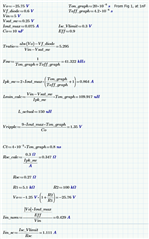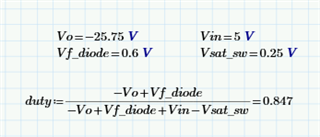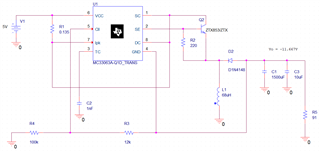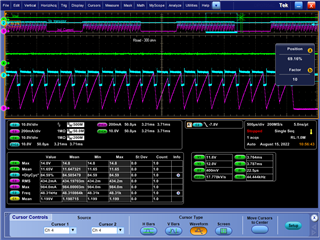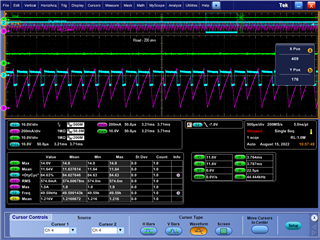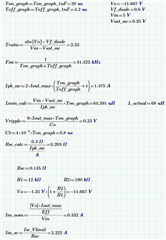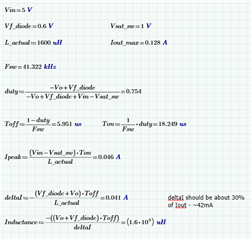I am trying to put together a design, using the MC33063A IC, and I’m having some trouble getting it to function properly on the bench. I am trying to use the chip in an inverting regulator setup, with an external npn switch to create a -25.75V rail @ 75mA of output current. Below is my schematic (R5 is the load of the converter – set to draw 75mA at -25.75V). When I simulate this, I get the correct output regulation, but when I build it on my bench, it will only regulate properly at very light loads. At any load with a resistance below about 2.3kohm (about 11mA), the output voltage gets pulled lower and lower. I attached a few plots to show what I’m seeing - they are at 6300 ohms, 2300 ohms, and 1300 ohms of resistive load (R5 in the schematic). It seems like I’m hitting some sort of power limit when the inductor is no longer in discontinuous mode, but I can’t figure out exactly why it's happening, or what is wrong with my calculations. I’ve tried reducing R1 to a lower value with no effect. I’ve tried multiple Ct caps with no effect. I don’t think I’m violating any electrical ratings on the diode or npn transistor. The inductor is rated to 1A peak, and I’m not getting close to that. Any assistance you can offer would be appreciated. Thanks.
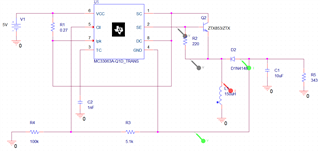


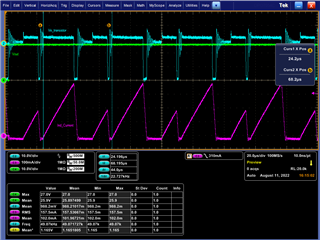
Below is my design equations for component selection. It follows the equations listed in 9.2.1.2 in the https://www.ti.com/lit/ds/symlink/mc34063a.pdf datasheet.
